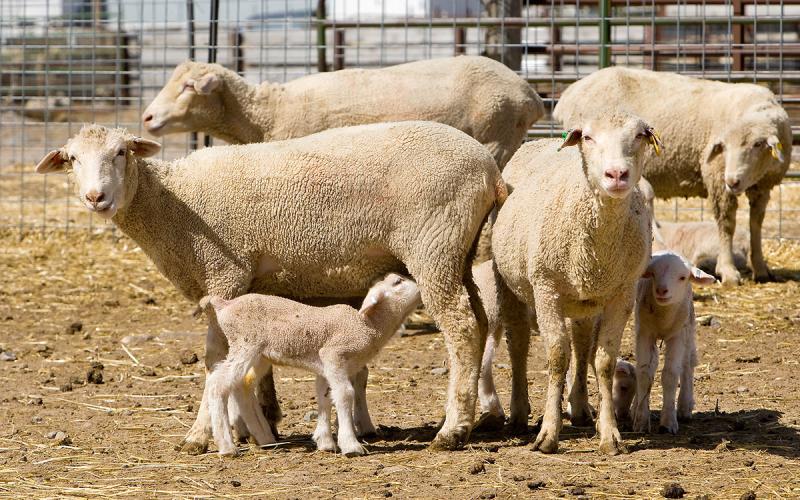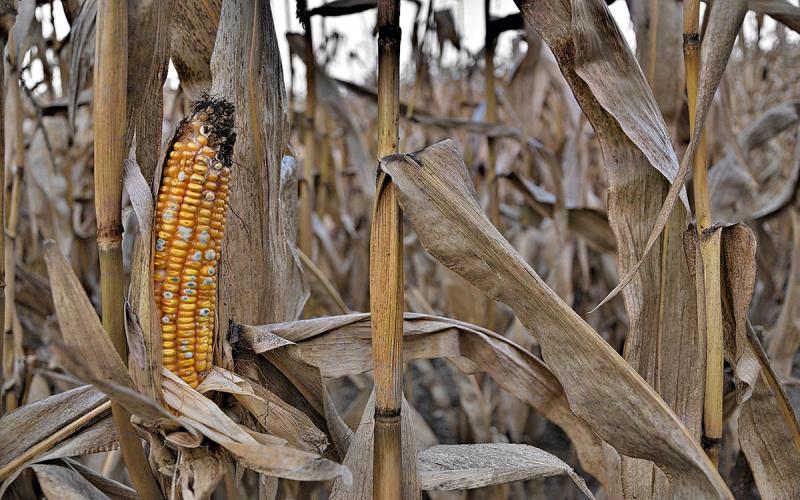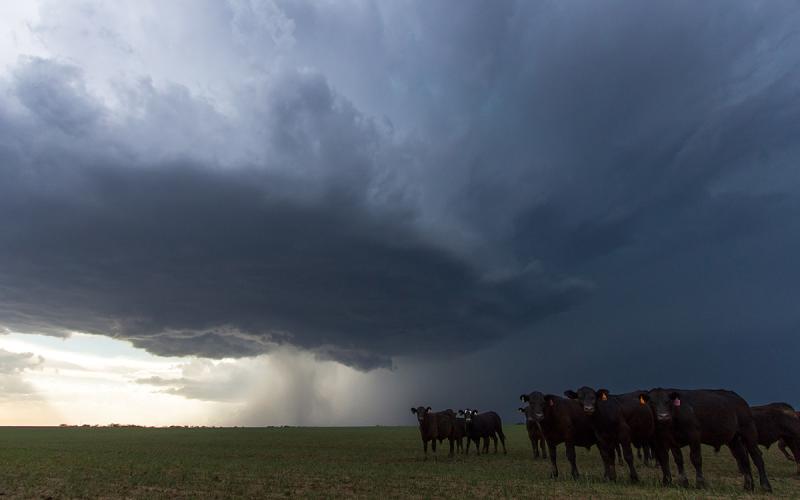Written collaboratively by Joe Darrington (former SDSU Extension Livestock Environment Associate) and Russ Daly.
Sheep and goat producers in the upper Midwest rely on annual lamb or kid crops to maintain economic viability. Reduction in the lamb or kid crop due to abortion (premature birth) and stillbirths are a common occurrence on many farms. Some of these problems have implications for human health as well as animal health. This article will discuss some methods to limit risk and improve biocontainment if you find yourself dealing with abortions on your farm.
Pregnancy losses in sheep and goats can be sporadic and uncommon or occur in the form of “abortion storms,” or outbreaks where up to 20-30% of a flock’s pregnancies are lost. These losses can occur for a number of reasons, including (particularly in the case of large outbreaks) infections with various bacteria, viruses, or protozoa.
Human Health
Some of these germs not only pose threats to pregnant sheep and goats, but they can also cause illness in people (zoonotic diseases). Bacteria such as Chlamydophila, Campylobacter, Coxiella burnetii (Q fever), and the protozoan Toxoplasma can be implicated in cases of human illness. These illnesses can result in vague flu-like syndromes, chronic infections, diarrhea, or the loss of pregnancy in women.
Since it’s not possible to know without diagnostic testing whether a pregnancy loss in a ewe or doe is due to a zoonotic pathogen, everyone working with these cases should take common-sense precautions to avoid potential illness. In addition, even the normal birthing process can be a source of Coxiella (Q Fever), which means precautions are in order even when attending normal births in sheep and goats. Certain facility considerations will greatly help reduce these risks as well.
Personal Safety
All farm workers should wear disposable latex or nitrile gloves to prevent contact with the skin when working with or in the environment of these animals. Disposable gloves and sleeves are particularly important when assisting with the birthing process. Coveralls and boots that stay in the barn should be used.
Because of the risk to pregnancy posed by many of these germs, pregnant women should stay out of lambing and kidding barns, and not work with animals that are or recently have given birth. Contact with aborted tissues and fluids should especially be avoided.
Facility Considerations
Cleaning
- Exclude other pregnant ewes from the area surrounding the aborted materials for a minimum of 24 hours (if possible)
- Remove and isolate the ewe that aborted from contact with pregnant ewes.
- Remove placenta, fetus and fluids. Disposal of any aborted tissue, including fetuses, placenta, bedding, and soil contaminated with birthing fluid should be done as quickly as possible to minimize the potential for contaminating the rest of the pen. The worker should use latex or nitrile gloves to pick up the materials and place into a double plastic bag before moving it out of the pen. The material should be burned, buried, or composted in a location well away from other sheep or goats. Special care should be taken such that dogs, cats, or other animals cannot gain access to these materials.
- Apply a thermal or chemical disinfectant protocol to the area. Work with your flock veterinarian or SDSU Extension specialists for discussion of protocols.
Design & Set-Up
How facilities are designed, set up, and managed can impact the identification and help ensure a safe and effective response to an abortion outbreak.
- Concrete vs dirt floors/lots: The largest differentiation between concrete and dirt floors in lots or facilities is the ease at which the floor can be cleaned and disinfected. Concrete floors are much easier to disinfect as chemical disinfectants do not work as well in the presence of organic materials (bedding, dirt, feces, etc.). The principal downside and obstacle to finishing facility and holding pen floors with concrete is the substantial cost.
- Easy access to disposal site without cross contamination: In order to limit exposure to other individuals in the flock it is important to be able to remove aborted materials without dripping materials through the holding pens or any pasture ground. Locating a disposal area (burial, composting, incineration) away from the winter lots/pasture that are used for gestation is important to decrease the risk of further contamination by transporting the materials. Additionally, the disposal site should be in an area never occupied by sheep or goats.
- Easy Observation: Pens that are used for gestating small ruminants should be well lit (if indoors) and easy to observe. This is helpful in identifying pregnancy loss as well as to quickly identify normal births.
In Summary
Early identification and proper response to cases of pregnancy loss in sheep and goats will help limit the risk of human illness for farm workers and limit infectious disease spread throughout the flock. Understanding effective cleaning protocols and the design of lambing and kidding facilities for disease containment will pay off with the overall health and safety of animals and the people who work with them.


